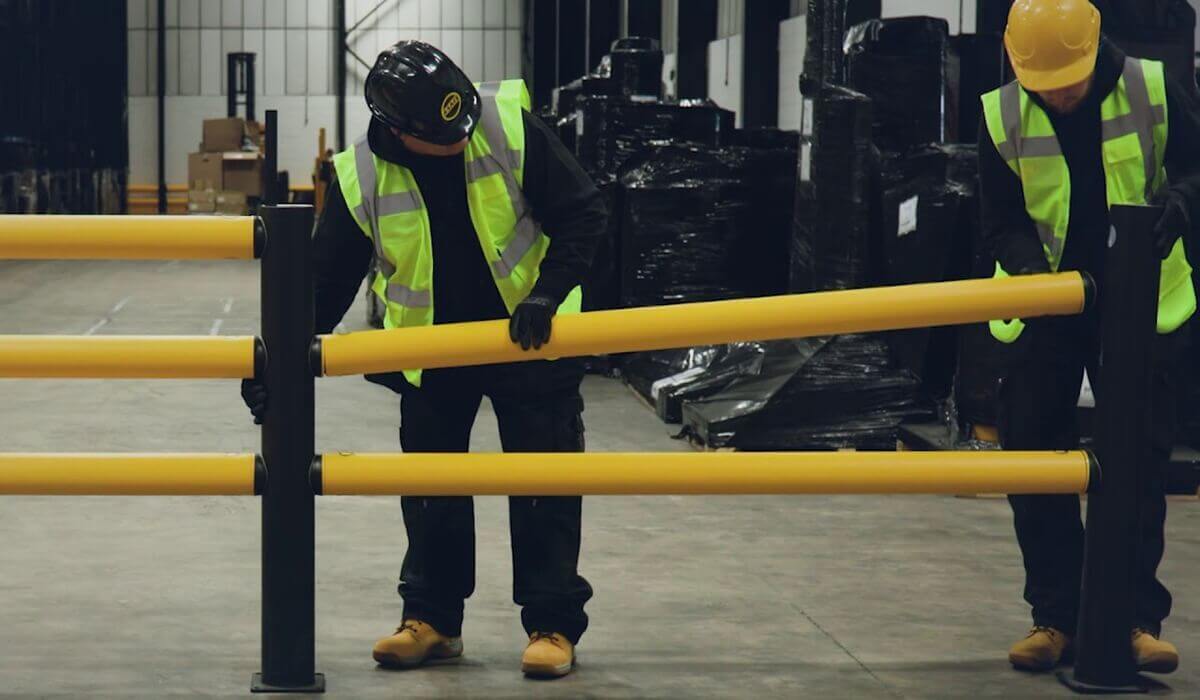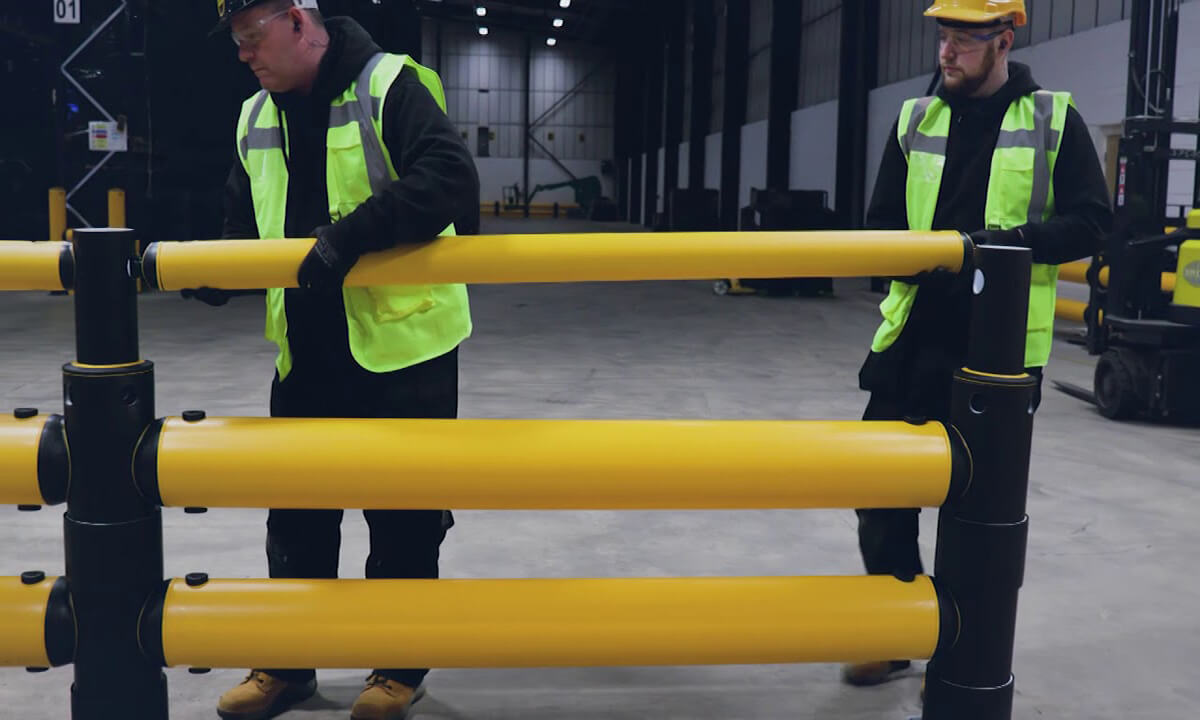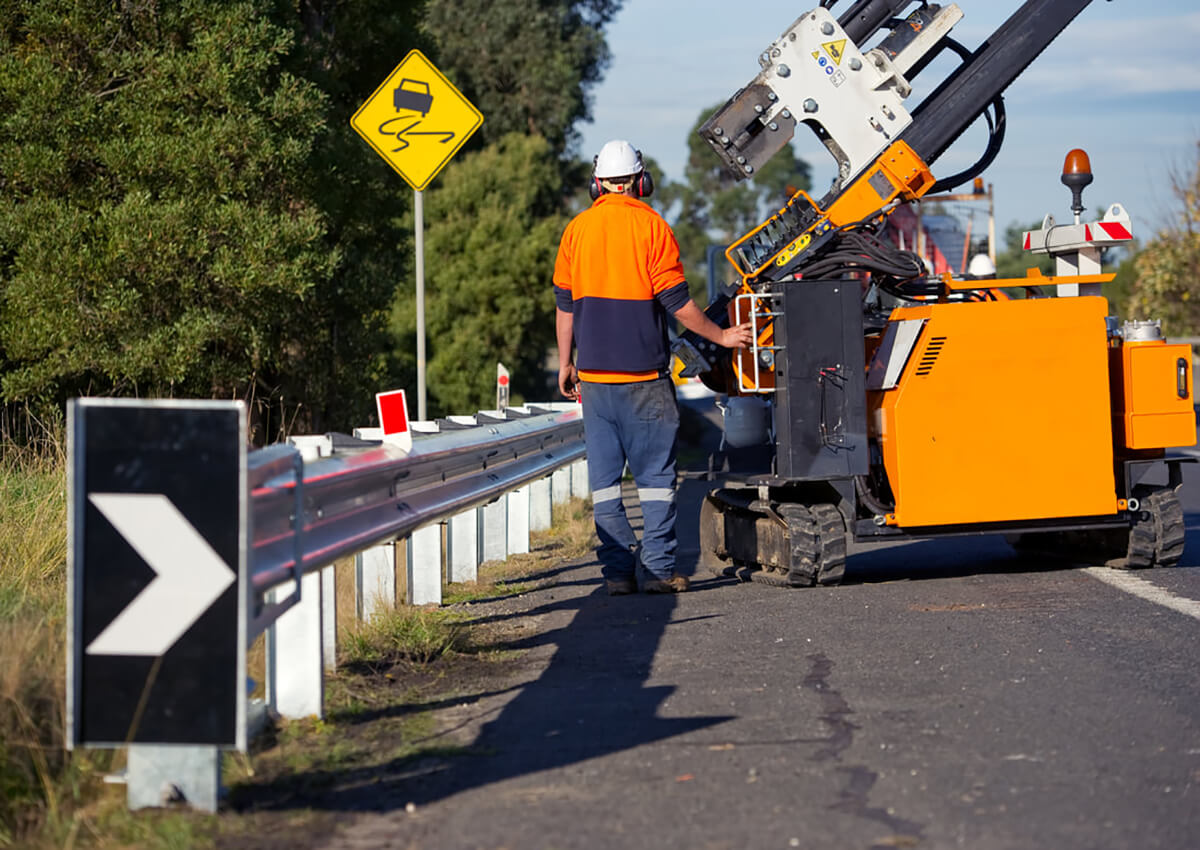Road safety barriers are essential to ensure the safety of pedestrians and motorists. They provide a physical barrier between roads and sidewalks, protecting pedestrians from moving vehicles and preventing accidents. Installing a pedestrian barrier is a simple process that requires careful planning and execution to ensure its effectiveness.
In this blog, we will walk you through the step-by-step process of installing a pedestrian safety barrier. We will also explore the importance of road safety barriers, traffic control, and the effectiveness of safety barriers.
1. Conduct site investigation
Before installing pedestrian safety barriers, a site survey must be conducted to determine the exact location of the installation. The site survey will also help you identify any potential hazards that may affect the installation process or the effectiveness of the barrier.

2. Design pedestrian guardrail
After the site survey, the next step was to design the pedestrian barrier. There are many types of pedestrian safety barriers, such as metal barriers, concrete barriers, and plastic barriers. The type of barrier you choose will depend on your specific needs and budget.
3. Prepare the installation site
Before installing the pedestrian guardrail, you need to prepare the installation site. This includes removing any debris from the area, marking the location of the barrier, and preparing the foundation for the barrier installation.
4. Install pedestrian barriers
Once the site is ready, you can start installing pedestrian safety barriers. This involves securing the barrier to the ground using bolts or other fasteners. You may need to use heavy equipment, such as a crane or excavator, to properly install the guardrail.
5. Test the barrier
After installing the pedestrian safety barrier, it must be tested to ensure its effectiveness. This involves simulating various scenarios, such as a car hitting a guardrail, to ensure the necessary protection for pedestrians.

6. Importance of road safety barriers
Road safety barriers are essential to ensure the safety of pedestrians and motorists. They provide a physical barrier between roads and sidewalks, preventing accidents and protecting pedestrians from moving vehicles. Road safety barriers can also help control traffic by guiding vehicles along the correct route and preventing them from entering restricted areas.
1) Traffic control
Traffic control is an important aspect of pedestrian safety barrier installation. It is crucial to ensure that the installation process does not disrupt traffic or cause congestion. You may need to implement temporary traffic control measures, such as road closures or detours, to ensure that the installation process is carried out safely.
2) Safety barrier effectiveness
The effectiveness of pedestrian barriers is essential to ensure the safety of pedestrians. Choosing a barrier that is strong enough to withstand the impact of a moving vehicle and firmly anchored to the ground is crucial. Regular maintenance is also necessary to ensure that the barrier remains effective over time.
7. Common installation errors
Here are three common missed installs:
1) Do not follow the design calculation
The calculation provides compliant riser specifications, the correct spacing between columns, and the anchorage embedment required to achieve the required design load. Proper planning is essential, otherwise, barriers will fail to achieve what they are designed to do, which is to protect people from danger. Building regulations and BS6180 require barriers, handrails, and guardrails to meet minimum height requirements and be able to withstand all forms of load.
For example, the design of pedestrian handrails requires a design load of 740 Nm. If the system is not designed correctly, then it will not be able to withstand the required load. Proper design calculations will also help save money, as you will be able to calculate spacing accurately. We often find that systems are installed to what companies consider the safest specifications, but in reality, they overcompensate for the spacing between the posts, which means that railing systems cost more.
2) Do not assume that you know how to install the system properly and comply with standards
Installing a safety barrier system is quick and easy with accessories, but you still need to know what you’re doing. Common mistakes often occur on stairs or ramps, where handrails may be lower than the required 900-1100 mm height, or only installed on one side of the stairs or ramps instead of on both sides as required.
If there is a downhill and a curb or curb rail is omitted to prevent the wheelchair from sliding off the rail, the center rail can usually provide adequate protection.
3) Using the wrong fixed details
We have seen cases where the base flange is fixed to the brick masonry with an inappropriate anchor bolt or uncored anchor, or where a wall fastener is used as the base flange. It doesn’t take long before these safety railings or handrails start to become unstable, either wobbling or coming loose from the fixed brick masonry or substrate, making the system non-compliant and potentially dangerous.
When attaching pedestrian handrails to brick masonry, we recommend using a 78 mm diameter diamond core drill with a depth of 250 mm for each post and then fixing the post in place with resin to achieve the required strength and durability.

8. Conclusion
Installing pedestrian safety safety barriers is an important step in ensuring the safety of pedestrians and motorists. By following the step-by-step guide above, you can install an effective and reliable barrier. Remember to conduct a site survey, design the barrier, prepare the installation site, install the barrier, and test its effectiveness. By doing so, you will create a safer environment for pedestrians and help prevent accidents on the road. If you have any other questions, please contact Aotons.





Leave A Comment